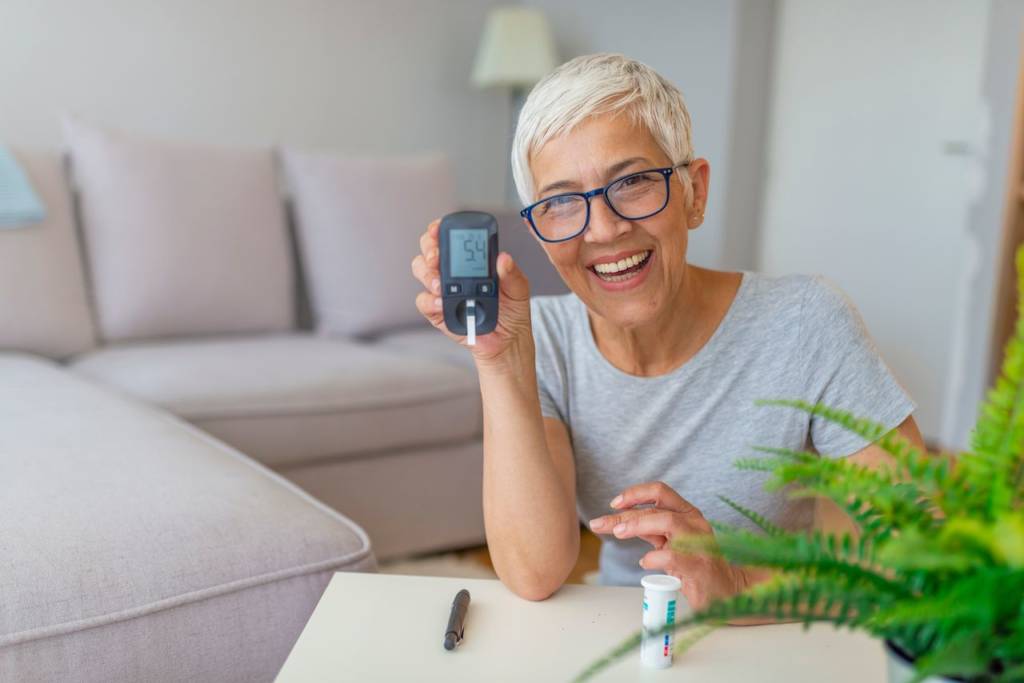
Diabetes is described as a condition where the amount of glucose in your bloodstream is too high because the body cannot use it properly. This is because your pancreas does not make insulin or does not have enough to allow glucose to enter your body’s cells, or the insulin released does not work properly.
Insulin is a hormone secreted by the pancreas that helps glucose enter the body’s cells, which is used as fuel for energy. We generally live our lives when our body functions well; therefore, it is vital to stay healthy to live a healthy life. Glucose comes from digesting carbohydrates and is also made by the liver. Carbohydrates can be obtained from foods and drinks, including starchy foods such as potatoes, wheat bread, sugar, fruits, dairy products, and other sweet foods. If you are suffering from diabetes mellitus, your body can’t properly use glucose, which accumulates in the bloodstream and cannot be used as fuel. Read on to learn a brief about diabetes causes symptoms and treatment.
Types of Diabetes
There are mainly two types of diabetes: Type 1 and Type 2.
Type 1 diabetes
Type 1 appears when the cells that produce insulin in the body have been destroyed, and the body cannot produce insulin hormone. This hormone is the key that unlocks the door to the body’s cells. Once the door is unlocked, glucose can enter the cells, which are used as fuel. In people with Type 1 diabetes mellitus, the body cannot produce any insulin, so the key is not available to open the door, and the accumulation of glucose in the blood. It is still unknown why these insulin-producing cells have been destroyed, but it is most likely due to body’s abnormal reaction to the cells. This may occur because of a virus or other infection. Diabetes type 1 can develop at any age, usually before age 40, especially in childhood. The condition can be treated with daily insulin injections, a healthy diet and regular physical activity.
Type 2 diabetes
Type 2 diabetes develops when there is insufficient insulin, which means the cell doors are partially unlocked or when there is lots of insulin. Still, the lock doesn’t function properly (also known as insulin resistance. Because an excessive amount of glucose stays in the bloodstream and is not used as energy fuel if left untreated, it may tire you, make you feel extremely thirsty, and pass large amounts of urine. Because people with diabetes have problems with their insulin, they need to take measures to either form or allow the insulin they are creating. This can usually be done through a healthy lifestyle and treatment. Following treatment, the regimen includes healthy and regular exercise and the intake of diabetes medication. People with diabetes can achieve control over their blood glucose levels and lead healthy life.
Diabetes Causes and Symptoms
There are different causes associated with each type of diabetes.
Type 1 diabetes
It is still unknown what causes Type 1, but it is believed that sometimes the immune system mistakenly attacks and causes damage to insulin-producing cells in the pancreas. Genes play a crucial role in some people. It is also possible that a virus sets off an immune system attack.
Type 2 diabetes
Type 2 diabetes can develop from a combination of genetics and lifestyle factors. Being overweight and having obesity increases your risk too. Carrying extra fat, especially around your belly, makes your cells more resistant to the effects of insulin hormones on your blood sugar levels. The problem runs in families. Family members share the same genes that increase the risk of developing Type 2 diabetes and being overweight.
Symptoms of diabetes occur because some amount or all glucose stays in the blood and isn’t used as energy fuel. The body works hard to reduce blood glucose levels by flushing out excess glucose in the urine. The main diabetes symptoms include:
- Frequent visits to the toilet, especially at night
- Extreme tiredness
- Increased thirst
- Unexplained weight loss
- Slow healing of cuts and wounds
- Genital itching or regular episodes of thrush
- Blurred vision.
In patients with type 1 diabetes, the signs and symptoms are usually obvious and develop quickly over a few weeks. The symptoms are quickly resolved once the diabetes mellitus is treated and controlled.
Type 2 diabetes, the symptoms may be obvious as the problem develops slowly over the years and may only be diagnosed in a routine medical check-up. Type 2 diabetes symptoms are resolved once diabetes is treated and under control. A person with diabetes should be aware of low-sugar and high-sugar symptoms. High sugar symptoms include increased thirst, dry mouth, tiredness, and blurred vision. Unintentional weight loss, needing to pee frequently, and recurrent infections (bladder and skin infections). People with low blood sugar levels tend to have sweating, shaking, fast heartbeat, anxiety, dizziness, confusion, and hunger.
Treatment and prevention
Type 1 is not preventable because problems with the immune system cause it. Certain causes of type 2 diabetes, such as your genes or age, are not under your control either. Yet many other risk factors for diabetes are manageable. Most prevention strategies involve simple lifestyle modifications such as eating healthy and exercising regularly. If medication is needed to achieve good diabetes control, your doctor will discuss the best treatment choice that suits you.
The bottom line
Both genes and environment play a key role in triggering diabetes mellitus. Type 1 is caused by factors that are out of control, but Type 2 can be prevented by lifestyle changes (such as healthy food choices, increasing activity, and losing weight). Discuss diabetes risks with your doctor. If you are at risk, have your sugar level tested and follow your doctor’s instructions for managing your blood sugar.
Also Read: Diabetic Stomach Pain: Causes and Remedies
admin
Latest posts by admin (see all)
- What is Triluma Cream? Uses, Benefits, and How It Works for Skin - December 26, 2024
- What Causes Dark Spots? Understanding the Science of Hyperpigmentation and How Skin Lightening Products Help - December 26, 2024
- Tretinoin Gel vs. Cream: Which Formulation is Right for Your Skin? - December 20, 2024



